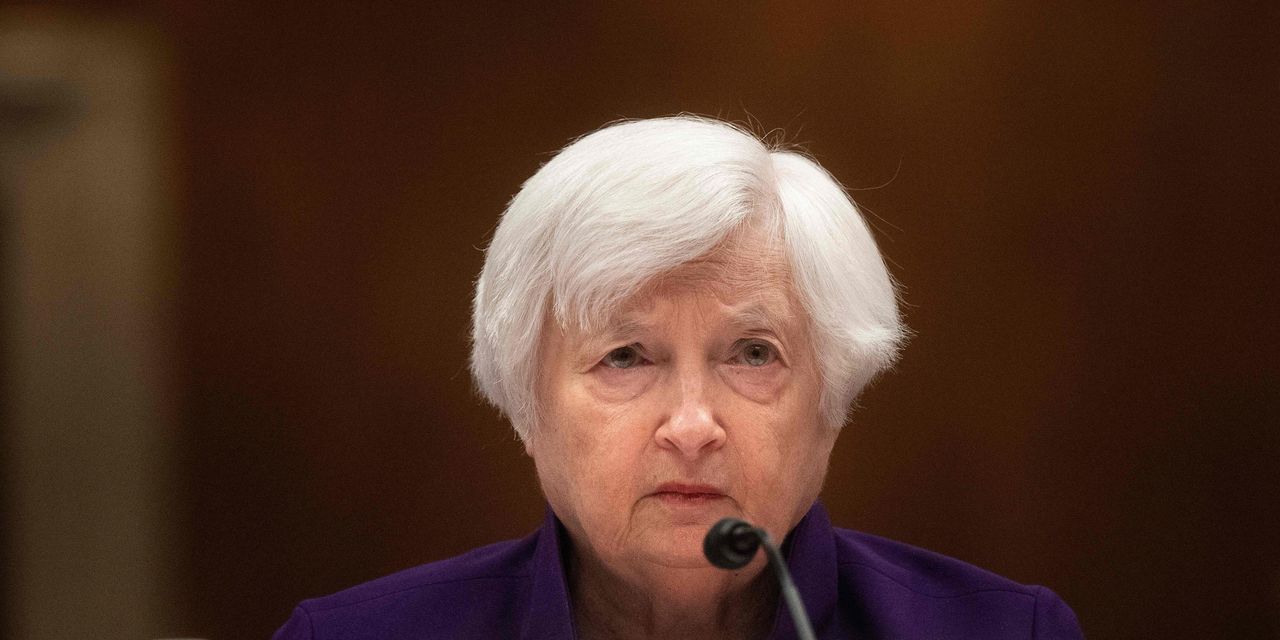Policymakers are sending mixed signals about the future of federal deposit insurance and the resulting uncertainty is rippling through financial markets.
Treasury Secretary Janet Yellen shot down rumors that she was considering leveraging the department’s emergency Exchange Stabilization Fund to broadly backstop uninsured U.S. bank deposits, which market observers blamed stock-market
SPX,
volatility throughout the week.
See also: Did Yellen upstage Powell? Stock-market declines after Treasury secretary says not looking at expanding deposit insurance
Regional bank stocks
KRE,
remain under pressure, while shares of First Republic Bank
FRC,
were down more than 3% in premarket trade Friday, putting them on pace for a nearly 50% decline on the week.
Here’s what you need to know about the debate in Washington over deposit insurance reform:
Why were uninsured depositors at Silicon Valley bank made whole?
By law, bank deposits up to $250,000 per account are insured by the Federal Deposit Insurance Corp., paid for by fees on banks.
There is a so-called systemic risk exception in the law that allows officials to lift the $250,000 cap. The Treasury secretary, in consultation with the president, can declare a systemic risk exception with the agreement of two-thirds of the FDIC and the Federal Reserve Board.
It was this exception that was invoked on March 12 to fully protect depositors in Silicon Valley Bank and Signature Bank.
Are officials promising to backstop other uninsured deposits?
Yellen and Federal Reserve Board Chairman Jerome Powell have walked a fine line in recent days, attempting to assure depositors that their money is safe without stating explicitly that the systemic risk exception would be invoked again to protect deposits of more than $250,000.
Powell said Wednesday that the central bank’s actions in recent weeks “demonstrate that all depositor savings in the banking system are safe,” but when pressed he admitted that this doesn’t mean the government is prepared to step in to backstop all uninsured deposits, unless doing so was necessary to prevent financial contagion.
Testifying in the Senate on Wednesday, Yellen said, “we can debate in the days ahead whether or not $250,000 is the right level for deposit insurance.” But she said the focus now should be no improving the public’s confidence that the U.S. has a sound banking system.
Will Congress lift the $250,000 cap?
Several key lawmakers have floated the idea of writing new laws that would raise or eliminate the cap on deposit insurance. Sen. Elizabeth Warren argued in a recent appearance on “Face the Nation” that the current cap might be impractical for some.
“Small businesses need to be able to count on getting their money to make payroll, to pay the utility bills,” the Massachusetts Democrat said. “Non-profits need to be able to do that.”
Utah Republican Sen. Mitt Romney in a virtual town hall with business leaders suggested that it might make sense to eliminate the cap entirely and pay for it with higher fees on larger accounts.
Senate Banking Committee Chairman Sherrod Brown said Wednesday that he sees the possibility of bipartisan agreement for reforming the current cap.
What’s next?
Congress is a slow-moving beast and getting both the Democratic Senate and Republican House to find common ground on even a technical issue like deposit insurance reform is a tall order.
“In Congress, talk is cheap,” Ben Koltun, director of research for Beacon Policy Advisors, wrote in a Wednesday note to clients. “There will be hearings, investigations, legislative text and lobbying campaigns … [but] no leader appears to be in a rush to pass anything.”
The Federal Reserve has however set up a new standing facility called the Bank Term Funding Program that allows banks to borrow from the Fed by pledging government bonds and mortgage-backed securities on very favorable terms.
By allowing banks to post such collateral at the purchase price rather than the current market price, regulators have blunted the risk that rising interest rates will force banks to realize losses on their bond portfolios and provided an alternative source of funding in the event of deposit flight.
“These measures will buy time for banks and regulators to work through their problem,” wrote Brian Smedley, chief economist at Guggenheim Investments in a recent research note. But even this measure might not be enough to combat a full blown bank panic if the public grows concerned about the safety of their deposits.
Profits for midsized and small banks will “take a hit…as they boost deposit rates and replace lost deposits with more expensive funding sources,” he added. “Regulators seem to be trying hard to avoid expanding FDIC coverage beyond the current $250,000 limit, but if conditions continue to deteriorate, they may be left with no other choice.”
Read the full article here








